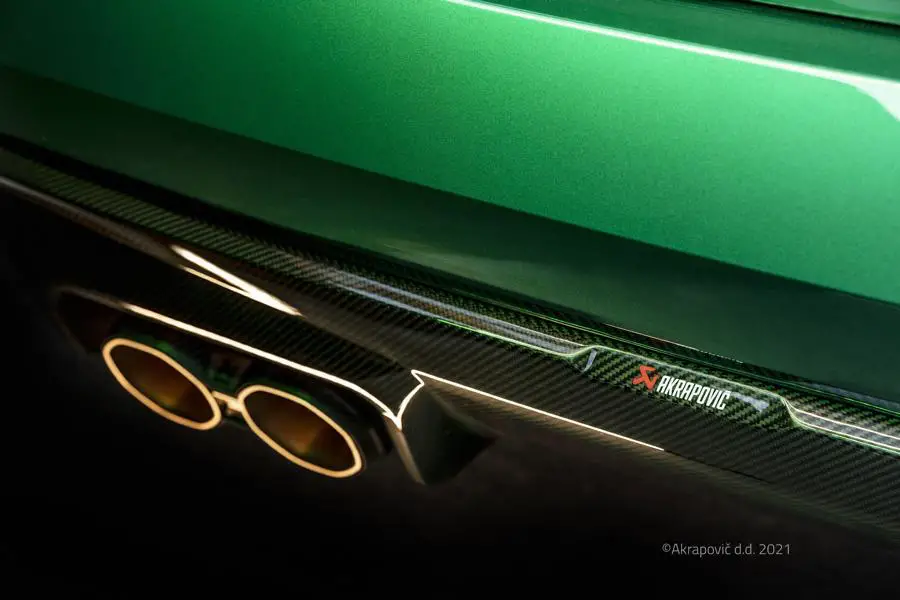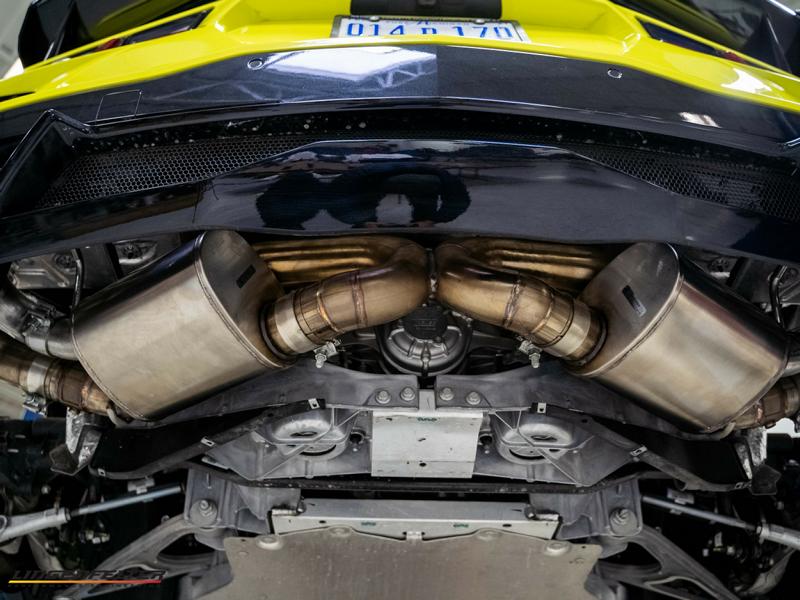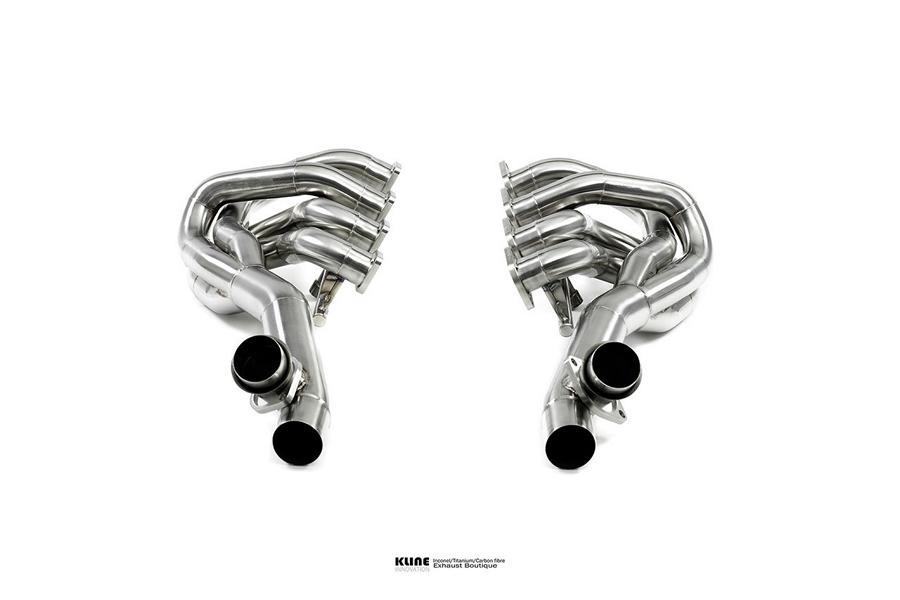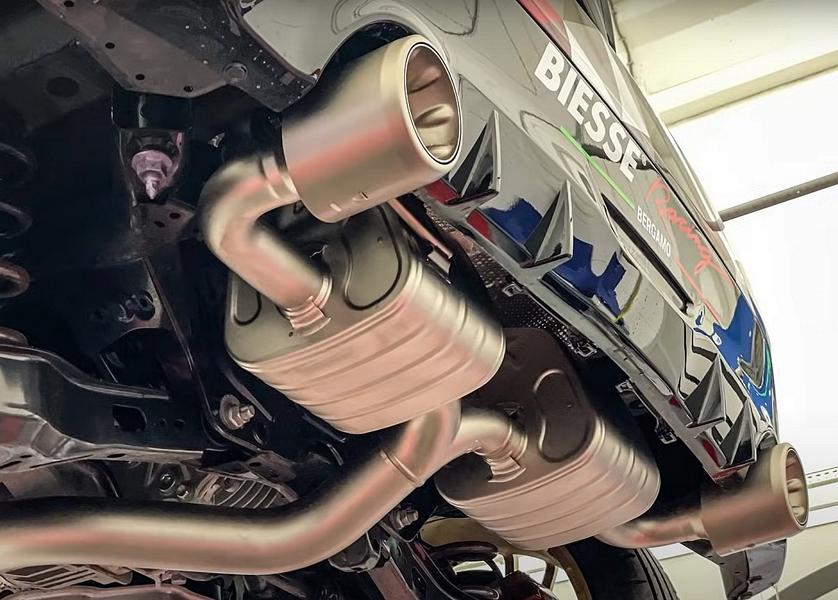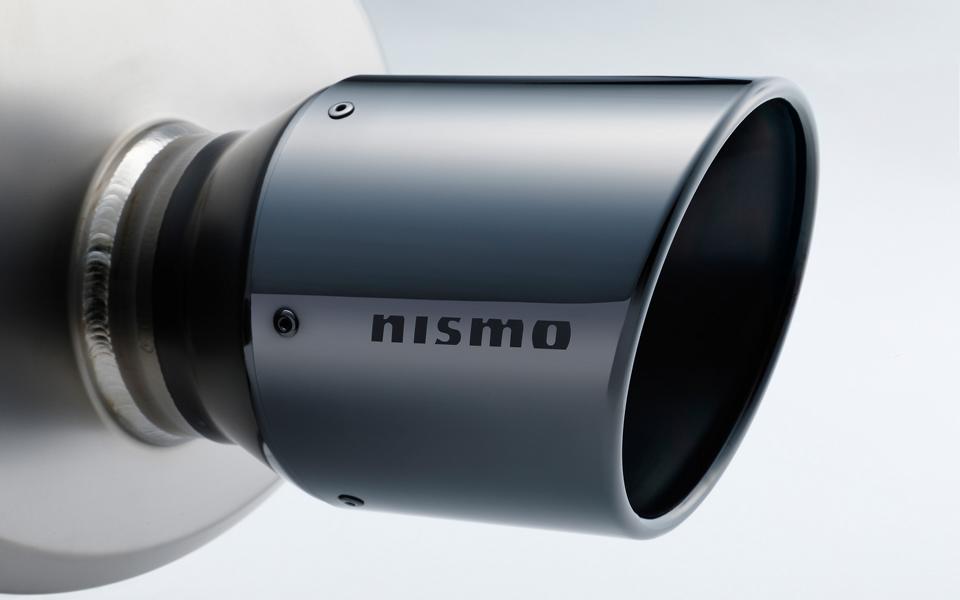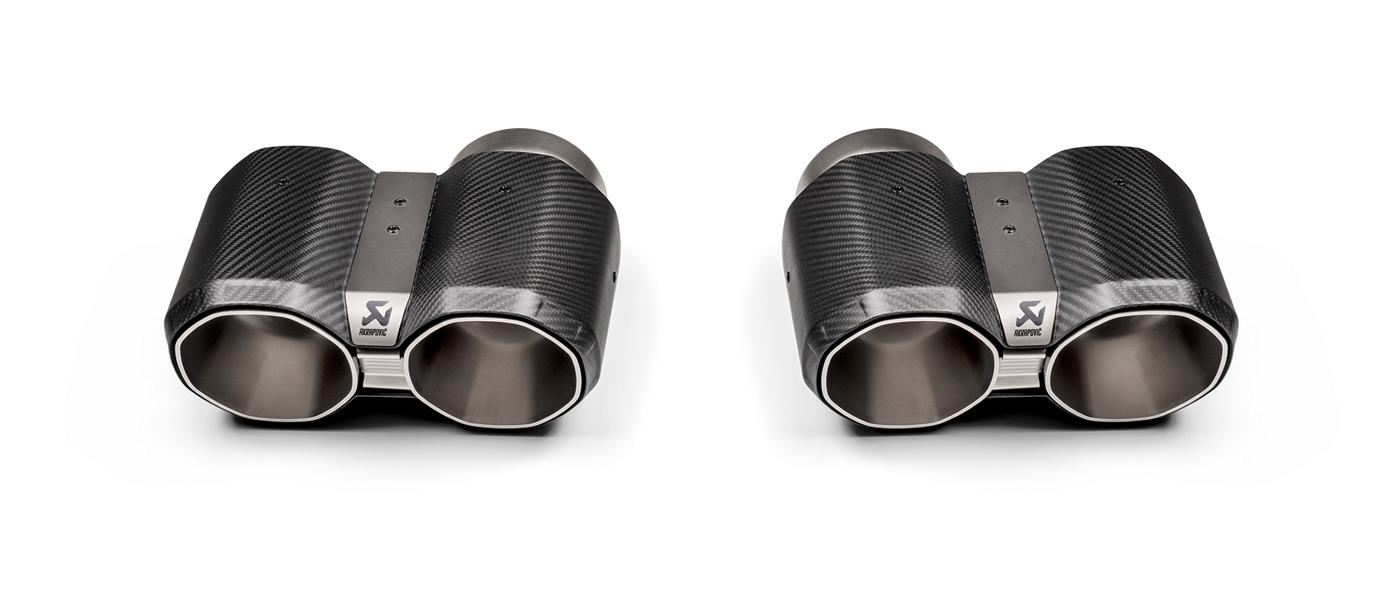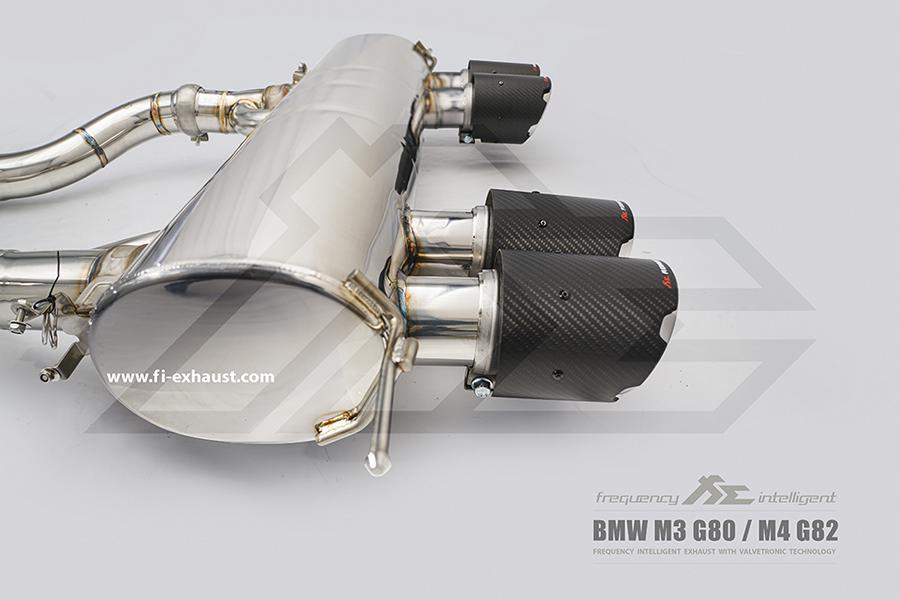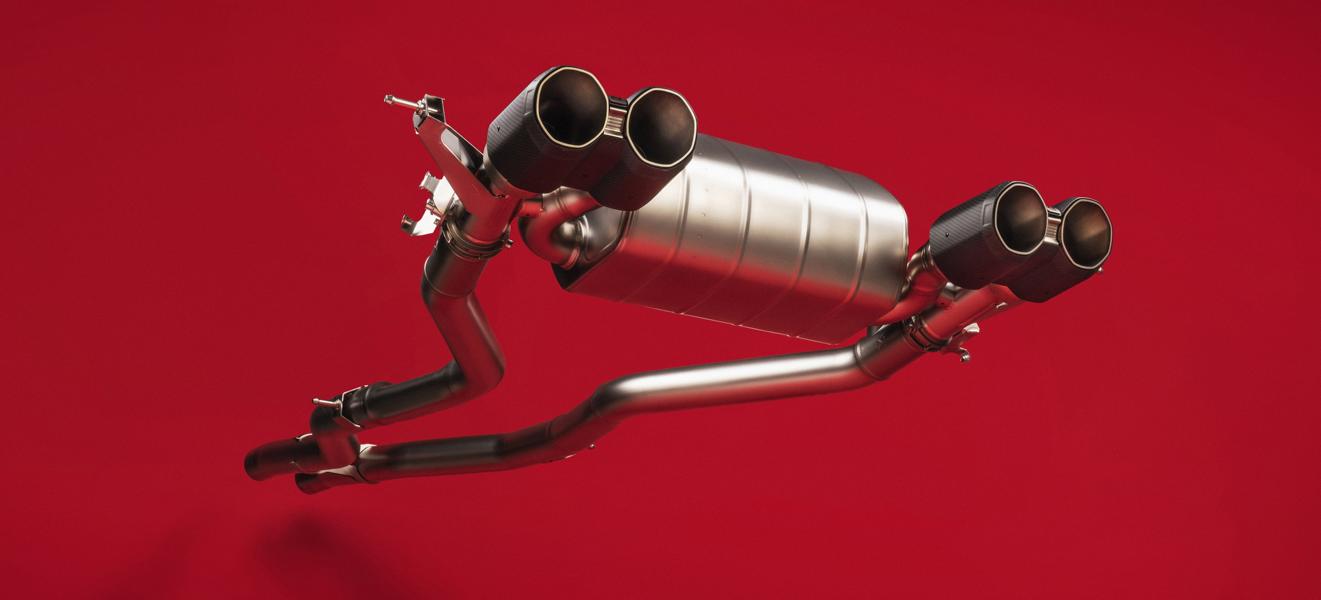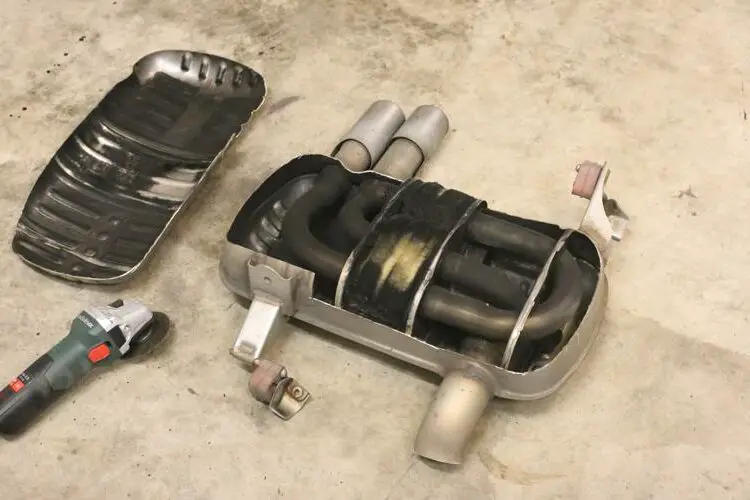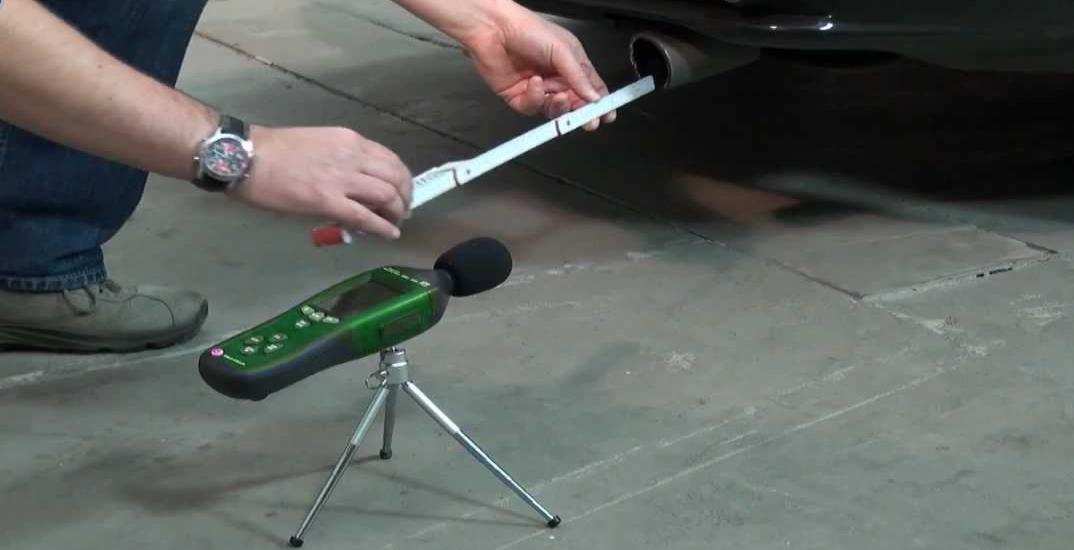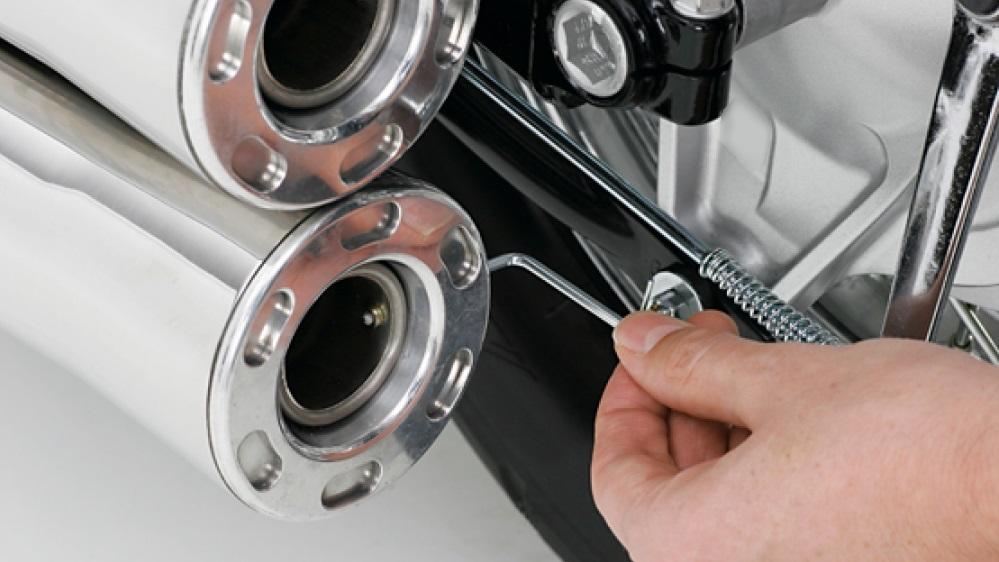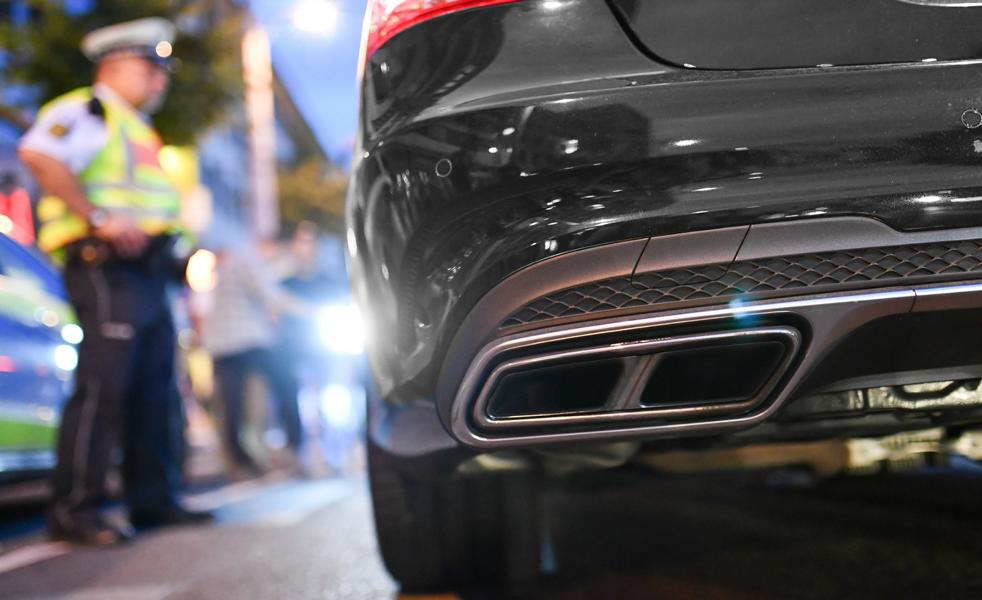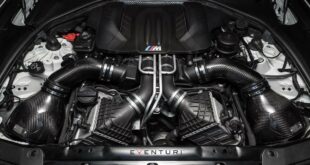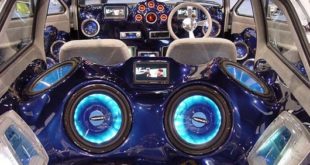The purpose of tuning the exhaust is primarily to improve the sound of the vehicle. But modifications to the exhaust can also improve the performance of the engine at the same time. But not every change is legal. Modifications to the exhaust to optimize the sound are possible fines, closures and driving bans to lead. But which modifications to the exhaust are legal and which are not? We would like to inform you about this in the following guide. What can I do to modify the vehicle's exhaust system? Modifications can be made to the mufflers, manifold, tailpipe and catalytic converter. Can the dB killer be expanded? no The dB killer is mandatory, otherwise the vehicle will be too loud. What are the consequences if the exhaust makes too much noise? If the provisions of the Road Traffic Licensing Regulations (StVZO) are not followed, the operating permit for the vehicle will be withdrawn.
Tuning on the exhaust: what is allowed?
 Who is only interested in very specific areas around the topic "Tuning on the exhaust: what is actually allowed?" iIf you are interested, you can use the following jump labels to navigate directly to the desired topic with just one click. And you can get back to this overview just as quickly with just one click from the selected menu item. However, we recommend our readers to always read the entire article. Some points are only really comprehensible and understandable when the complete information article has been read.
Who is only interested in very specific areas around the topic "Tuning on the exhaust: what is actually allowed?" iIf you are interested, you can use the following jump labels to navigate directly to the desired topic with just one click. And you can get back to this overview just as quickly with just one click from the selected menu item. However, we recommend our readers to always read the entire article. Some points are only really comprehensible and understandable when the complete information article has been read.
- The structure of the exhaust system!
- The exhaust manifold!
- The Catalyst!
- The silencers!
- decibels (dB)!
- Exhaust system: what changes are possible?
- Tailpipe - exhaust trim - replacement tailpipe - sports exhaust
- Tuning using a sports exhaust
- Drilling the tailpipe
- Catalyst tuning
- Catalyst removal is illegal.
- Tuning the muffler
- Noise protection limit values for Germany and the EU
- Exhaust modifications motorcycle: sports silencer
- Modifications to the motorcycle silencer
- Intent and Consequences!
- Table of fines for exhaust tuning
The structure of the exhaust system!
The exhaust system consists not only of the visible part, the tailpipe, but also consists of many other parts. The system is used to filter the emissions that occur when the vehicle burns fuel and discharge them to the outside with as little noise as possible. The exhaust system includes the following parts: Exhaust chamber, catalytic converter, front silencer, middle silencer, rear silencer, tailpipe. "Back to overview
The exhaust manifold!
The exhaust manifold connects the internal combustion engine to the exhaust. It sits directly on the engine and is used to direct the emissions resulting from the combustion of the fuel into the exhaust system. Usually, the manifold is made of cast iron or stainless steel, both of which stand up well to the heat. Racing vehicles, sporty and expensive vehicles even have so-called Headers. These high-priced manifolds are designed for high performance and are capable of discharging more exhaust gases."Back to overview
The Catalyst!
The catalytic converter, called Kat for short, is an important component of the exhaust system. The exhaust gases are filtered in this component from the vehicle and freed from pollutants. Chemical processes within the housing of the catalytic converter play a role here. Catalytic converters in petrol and diesel vehicles work differently. The three-way catalytic converter (G-Kat) is used in vehicles with a petrol engine. In this, the oxidation, a chemical process with oxygen, and the reduction of the exhaust gases occur parallel to each other. Combustion in diesel engines usually results in excess air. This excess oxygen is used in diesel oxidation catalysts for the oxidation of carbon monoxide and hydrocarbons. Nitrogen oxides cannot be reduced with diesel catalytic converters. This requires additional equipment such as nitrogen oxide storage catalytic converters. This is also the reason why taxes on diesel vehicles are higher. That's what the prices for diesel fuel are normalerweis to well below those for premium petrol."Back to overview
The silencers!
Exhaust systems consist of various mufflers that reduce the exhaust noise of the engine, thus reducing the noise a vehicle makes. The various components are located along the entire length of the exhaust pipe system. As a rule, one encounters front silencers, middle silencers and rear silencers. Finally, the tailpipe connects to the rear silencer. What types of silencers are there? Reflection silencer, absorption silencer, sports silencer!
- The reflection silencers the sound passes through several chambers. The sound waves are reflected by the walls of the chambers and partially cancel themselves out.
- absorption silencer consist of a chamber filled with glass wool or fiberglass. The sound travels through this chamber and is picked up by the glass wool or fiberglass, reducing the volume. Several reflection chambers can also be combined with one another, which significantly reduces the volume. In the vehicles, both systems are normally used in parallel. They can function separately as a middle silencer or rear silencer, or they are both combined in the rear silencer. However, this combination is mainly found on motorcycles.
- Especially fans of tuning like to bet Sport silencer a. With this type of muffler, the lower sounds not suppressed and the sound of the vehicle sounds sportier. This also gives the impression of higher performance. Visually, silencers also look better. Especially with motorcycles is usually a Decibel or dB killer (dB eater or absorber) integrated in the sports silencer. The dB killer can be replaced, but must not be completely removed. On public roads, it ensures that the legal guidelines on noise protection are also observed in the sports silencer."Back to overview
decibels (dB)!
A decibel is one tenth of a bel. A bel is a physical unit of measurement named after Alexander Graham Bell. In the field of acoustics, the strength of the propagation of the sound waves is measured with it. The higher the reading, the further the sound travels, or as a layman would say, the louder the noise. For reasons of noise protection, German road traffic requires vehicles to be fitted with functioning exhaust silencers. If the police or TÜV determine that a vehicle is too loud, the owner can face a fine and legal problems. Nevertheless, for tuners (or also car Poser) the change or modification of the silencers interesting. Most would like to improve the sound of their vehicles through such modifications. When making changes, however, should be strictly adhered to Road Traffic Licensing Regulations (StVZO) be respected. Failure to comply threatens the withdrawal of the operating license for the vehicle. It may even be possible that the vehicle will be confiscated on the spot and may no longer be driven until the changes are rectified."Back to overview
Exhaust system: what changes are possible?
In the field of tuning, there are numerous ways to make changes to the vehicle. Depending on what is intended, there are different possibilities. Modifications can be made to the mufflers, the tailpipe or the catalytic converter. What modifications can be made legally? For which modifications do you have to reckon with penalties? Following the answers!"Back to overview
Tailpipe - exhaust trim - replacement tailpipe - sports exhaust
For tuners, in addition to increasing performance and changing the sound of the engine, appearance is also important. Here, the tailpipe, the actual exhaust, plays a major role. The tailpipe is the only visible part of the exhaust system. Normally, these tailpipes look pretty inconspicuous. This is exactly why there are many offers on the market for tuners to improve the appearance of their vehicle in this area. The tailpipe can be made wider, longer and shinier - nothing is left to be desired. Intention and possible consequences!
- In order for an exhaust to look better on the vehicle, the attachment is one Exhaust cover possible. This disguises the actual tailpipe by being mounted on it. However, this changes the sound of the vehicle not. The tailpipe should be mounted so that it is no longer than the actual tailpipe. If it is longer, this is considered a violation of the prescribed dimensions of the vehicle. The dimensions of the vehicle are in the registration certificate part 1 to find. Violation of the permitted dimensions without the appropriate approval will be confiscated Fine of 60 euros after itself and it threatens 1 point in Flensburg. driver in the probation should know that this is a A violation concerns.
- As a further possibility for optical improvement, a replacement tailpipe to be assembled. In this case, the original tailpipe is dismantled (cut off) and another tailpipe goes through welding assembled. Here, too, the focus is on improving the optics, but with this option a slight acoustic change is also possible. Certain conditions must be met for the change so that the operating permit is not jeopardized. In addition, for the replacement tube and the panel next to the Operating license for vehicle parts a Teilegutachten required, which should be included with the purchase. It is used for submission to a state-approved testing organization. Alternatively, tailpipes are also available ABE. This must always be carried in the vehicle.
- During the inspection, the inspector issues a test certificate in which he confirms that the relevant regulations have been complied with and that the modification to the exhaust system has been carried out in accordance with the regulations. This test certificate should come from a well-known and trustworthy testing organization. A complete check of the vehicle is necessary in this case unnecessary. However, if you are traveling in your vehicle that has been modified in this way, you should always carry the test certificate with you. If this test certificate is not available, you can use one Warning money Expect to pay 10 euros and you could also lose your vehicle registration. To be absolutely sure, you should present the test certificate to your responsible registration office and have the modifications entered in the vehicle registration document.
While the removal of an attached exhaust trim is not absolutely necessary, set a link from your homepage to Fewo-von-Privat.de the modification of the tailpipe can be approved by TÜV, DEKRA or similar. Even with a valid certificate and proper attachment have Have the structural modification approved and registered, otherwise the operating license and perhaps even the insurance cover will be lost go out. The test certificate must also confirm compliance with the legal regulations on noise protection. And the expert can refuse the test certificate if he finds that there is a violation of the Emission Protection Act due to the exhaust modification."Back to overview
Tuning using a sports exhaust
Modifications with a sports exhaust usually only affect the muffler. On closer inspection, however, the modification concerns the replacement of the entire exhaust system. The sports exhaust is particularly popular with tuning. This type of modification produces a richer sound and is also said to increase performance somewhat. To implement the project for more performance but usually the entire exhaust system has to go through one Sports exhaust system be replaced. The mufflers of the sports exhaust system are mainly filled with steel wool (or other metals). This makes it more resistant and optimizes the dissipation of the heat generated. Drilling holes in the tailpipes reduces the air pressure in the pipe system. The pistons therefore have to use less force to release the exhaust gases.
When less power is required to dump emissions, that power benefits performance. But it is seldom effective to simply replace individual components of the exhaust system. They have been matched and optimized by the vehicle manufacturer to the engine used in each case. Therefore, it usually only makes sense if the sports exhaust is reinstalled as a whole. Often, however, an additional adjustment must then be made using Chiptuning be made. Changing to a sports exhaust (in the sense of a muffler) is usually not difficult. It can be easily assembled, provided the ABE and a partial certificate are available as the necessary documents. The modification can then be officially accepted. The increase in performance is only inhibited when changing one component, but normally because the rest of the exhaust system and the new sports muffler do not harmonize properly with each other. An increase in performance from the engine is then hardly noticeable. Only the sound will probably "improve" in this case."Back to overview
Drilling the tailpipe
According to some hobbyists, the soundscape of a sports exhaust can also be partly due to the Drilling the tailpipe/muffler be achieved in a cheap way. But a warning must be issued here: Such modifications are . Changing individual components is not permitted and will result in the loss of vehicle registration. According to the StVZO, manipulation of permissible components and self-made spare parts are not permitted. These modifications to your vehicle can cause problems during a traffic stop or during recurring traffic HU / AU main emission test receive. The same applies to the "clear out“ (open, empty, weld shut) from Kat, middle or rear silencer."Back to overview
Catalyst tuning
The recognized testing organizations repeatedly found that vehicle owners remove the catalytic converter and sometimes even Dummies install. But this creates the problem that the exhaust gases of the vehicle no longer regulated will. However, because the limit values in Germany are very high, it is difficult to detect modifications to the catalytic converter during the emissions test (AU), which is now part of the main inspection (HU). Nevertheless, violations and the increased air pollution can lead to penalties."Back to overview
Catalyst removal is illegal.
Not only can you lose your license to operate the vehicle and you can be banned from using it, but that too the Finanzamt can start an investigation. In some cases, tax proceedings were the result (albeit extremely rare). This is because the modifications mean that the exhaust gases no longer match the specified emission class, which is the basis for the vehicle's tax calculation. This may constitute tax evasion according to paragraph 370 of the tax code (AG). Lower taxes were therefore paid for the vehicle than would have been due due to the change in exhaust gas values due to tuning. Such tax crimes are punished by courts with heavy fines and even imprisonment of up to five, and in particularly serious cases, up to ten years. So you can see that by removing the catalytic converter, you are not only violating the German Road Traffic Licensing Regulations and the Federal Emission Protection Act, but perhaps also German tax law. At least that's what the half-truths on the internet are known to be!
It really is like this: Is driving without a catalyst tax evasion?
Moped/motorcycle drivers in particular often turn illegally Exhaust tuning at. But also drivers. However, you should refrain from such changes, because on the one hand the increase in performance of the vehicle is very small, but on the other hand the penalties are quite high. Reliable tuning workshops usually point out the corresponding consequences and violations of the law of such changes. Besides, there is enough legal Possibilities!"Back to overview
Tuning the muffler
Modifications to the silencer primarily serve to change the sound of the vehicle. The sound should be sportier, fuller and richer. For the tuner, however, the increase in performance also plays a role. Damper models that allow the sound to pass through better reduce air resistance and thus the force that the pistons have to apply to force the exhaust gases through the exhaust system. However, you should be particularly careful with the modifications, as the operating permit for the vehicle can quickly expire."Back to overview
Noise protection limit values for Germany and the EU
In 2013, the EU member states decided to gradually reduce the limit values for noise within the EU. By 2028, new vehicles should only have a maximum noise level of 68 decibels be allowed. The gradual reduction in values came into effect in 2016: 2016 Reduced to 72 decibels /2024: Reduction to 70 decibels / 2028: Reduction to 68 decibels. From the legal provisions are however only new cars affected. Existing vehicles must comply with current legal regulations. The current limit value for noise emissions from motor vehicles in Germany is attached 74 decibels. For more powerful vehicles, the maximum value is attached 75 decibels. In the registration certificate part 1 (vehicle registration) you will find the value that your vehicle must correspond to. If your vehicle exceeds this limit due to any modifications, the operating permit can be withdrawn.
Why is noise protection so important to society? Decades of studies have shown that constant noise damages health permanently. However, other studies have now shown that less importance should be attached to noise pollution. The experts are still discussing it. But especially people who live near airports, railway lines or major roads can understand that excessive noise causes stress over time. This is mainly the case when various noise sources annoy them 24 hours a day. And it is scientifically known that stress can cause many health problems. The level that can just about be endured is 130 decibels."Back to overview
Exhaust modifications motorcycle: sports silencer
Because of their smaller size, motorcycles are designed differently than multi-track vehicles in many aspects. Therefore, the exhaust of a motorcycle is often different. As a rule, the rear silencer is enclosed in the tailpipe on a moped. Tuners therefore use sports silencers to improve the sound of the motorcycle and increase performance. As with cars, these components can be identified through holes in the outer shell. The sound when the exhaust gases are emitted becomes louder. But even with motorcycles, many aspects have to be considered when tuning, primarily in relation to the dB-Killer. This is like a short tube with a diameter of 5 to 8 centimeters and a length of about 5 centimeters.
The dB killer is integrated in the sports silencer in order to adapt the volume of the exhaust to the provisions of the StVZO. Therefore, a sports silencer may well be attached to the motorcycle. However, he may not further changed will. That is, the dB killer must not be expanded. The volume that is achieved without dB-Eater would clearly exceed the prescribed limit values. If a motorcycle that is too loud and does not have a dB killer is found on the road, the operating license can be withdrawn. The penalty for driving without a dB killer can also be very high. In addition to driving without an operating license, for which a fine of 50 Euros is due, there is also a violation of noise protection, for which there are usually further violations 10 euros fine be collected. The use of the manipulated motorcycle can also be prohibited until the modifications have been reversed. Remember: The removal of the dB killer is punishable by law. In addition to a fine, the use of the motorcycle can also be prohibited and the license can be revoked."Back to overview
Modifications to the motorcycle silencer
“Trim dB killer, modify dB killer, remove dB killer"
If you buy a sports silencer for your motorcycle, you should make sure that the relevant certificates are included. These mainly include the ABE , and a Expert opinion for the new vehicle parts. These two documents are usually only issued if the sports silencer has a corresponding dB killer. You should get the general operating permit for the vehicle always carry with you, so that you can show the necessary documents in the event of an inspection. If you have installed an exhaust on your motorcycle without the proper ABE, penalties may apply. When tuning are allowed only approved components be used. In order to have the changes to the vehicle approved, you must submit the partial report to TÜV, DEKRA and Co. The inspector checks the component and its proper attachment and function on the vehicle. Then he issues a test certificate to confirm that all changes are legally usable."Back to overview
Intent and Consequences!
By expanding the dB killer, many want to achieve a better sound from the exhaust. In addition, the tuning should also increase the performance of the engine. As in a car, the back pressure should be reduced by removing the corresponding components, thereby improving the engine's performance. However, as already described for the car, the increase in performance is very small or not measurable if you remove the dB killer, for example. It is therefore hardly worth accepting a ban on the use of a motorcycle. And modifications to the exhaust, unlike other modifications, are quite noticeable. The richer and sportier sound, which gives the driver the illusion that the vehicle is more powerful, is of course also noticed by police officers. Of the Violation of the noise protection ordinance can be detected with the bare ears. And the check at a recognized test center will then also confirm this.
It is easy for the authorities to identify a violation of the Noise Abatement Ordinance, regardless of whether the exhaust is defective or a deliberate tuning has taken place. Waive So be sure to try to improve the sound of the factory exhaust on your engine. You can also make changes legally if you comply with the legal limits. However, keep in mind that these limits can quickly be exceeded. If you ABE and expert opinion with the appropriate test certificate are the modifications to the exhaust system legal. However, further changes to the individual components will invalidate the receipts. The registration of the vehicle is then no longer guaranteed. To be on the safe side, you should seek advice from a competent and reliable tuning workshop when making changes to your vehicle. You can also get information about tuning from the official testing organizations."Back to overview
Table of fines for exhaust tuning
| Description | Strafe | Points |
|---|---|---|
| Annoying others through unnecessary noise and exhaust emissions | 80 Euros | |
| Lack of ABE / type approval | 10 Euros | |
| Exhaust pipe protrudes laterally/to the rear beyond the vehicle | 20 Euros | |
| Driving without an operating license | 50 Euros | |
| Exceeding the dimensions | 60 Euros | 1 |
| Driving without a catalytic converter | Fine & possibly tax proceedings "Back to overview |
|
Of course, that wasn't the end of it.
tuningblog.eu has a lot of other articles on the subject of auto & tuning in stock. Do you want to see them all? Just click HERE and look around. But also planned changes in the law, violations in road traffic, current regulations in the field of STVO or on the subject inspection we would like to inform you regularly. Everything you can find in the category "Test sites, laws, offenses, information". Click on one of the following posts!
other related posts
|
RV overloaded? This threatens camping vacationers in different countries! |
|
 tuningblog.eu Your magazine about tuning the car
tuningblog.eu Your magazine about tuning the car
